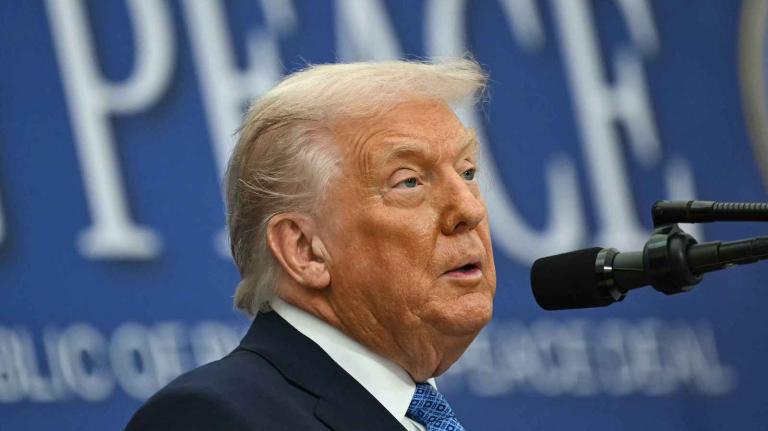 With a chart-topping 26,000 people per square mile, New York City has to be smart.Photo: Tom TwiggBack in 2004, the news emerged that two-thirds of the world’s population might be living in cities by 2030. At SustainLane, we got curious about what cities were doing to handle that growth, and we began taking a closer look into the sustainability initiatives taking hold: Which cities were planning for the future, and which were painfully unprepared?
With a chart-topping 26,000 people per square mile, New York City has to be smart.Photo: Tom TwiggBack in 2004, the news emerged that two-thirds of the world’s population might be living in cities by 2030. At SustainLane, we got curious about what cities were doing to handle that growth, and we began taking a closer look into the sustainability initiatives taking hold: Which cities were planning for the future, and which were painfully unprepared?
It turned out there were no clear criteria out there to answer our questions. So we put together a team of writers, researchers, peer reviewers, editors, and videographers, and spent six months gathering and analyzing information from around the country, rifling through the records and documenting the innovative practices of the nation’s largest 50 cities. The SustainLane U.S. City Rankings were born. (You’ll find the annotated criteria below.) Our goal was not to shame, but to inspire, to facilitate the sharing of best practices, and to see all cities continually raise the bar on their efforts. No small tasks.
We looked at average traffic commutes, affordable housing, waste diversion, green space, energy usage, green buildings, natural disaster risk, air quality, water quality, public transportation, local food sources, and — perhaps most important — government innovations. What was happening at the city level to make the place sustainable? Going forward, we’ll add more categories, green jobs and education among them. All of these things indicate whether a city is prepared to take care of its citizens now and far in the future.

James Elsen.
In that first ranking, released in spring 2005, we found that Portland came out on top, with San Francisco and Seattle not far behind. We learned that West Coast cities and “blue” cities (New York, Chicago, Boston) seemed to be greener than “red” ones. We chalked that up, in part, to the notion that modern sustainability grew out of 1970s environmentalism — often the domain of Democrats, while Republicans saw environmentalism as anti-economic growth back then.
That’s less the case nowadays, given the connection that folks are increasingly drawing between sustainability initiatives and quality of life. Plenty of Middle American and red cities have made the list, from Jacksonville to Milwaukee, and we know from looking over the data for the 2008 rankings (due out in October) that even more are on the move. We look forward to seeing more cities score higher, and we expect an increasing pace of innovation adoption across the board. We’ll let you know who tops the new list soon.
Meanwhile, here’s a closer look at the categories we use. (See our site for a thorough explanation of our methodology.)
Transit: What options do you have?
Leadership in affordable and convenient public transit will pay dividends for a city, having positive impacts on childhood asthma rates, traffic congestion and associated stress, fuel consumption, and greenhouse gases. Since transit operations require multi-year — if not multi-generational — investments, strong leadership is required to push through needed upgrades nationwide, like bringing light-rail into our densely populated regions.
Energy Use: How sustainable are your energy options? Does your city have a co-generation plan? Wind or solar sources?
With the multi-trillion-dollar global energy prize going to the new technologies of wind, wave, solar, geothermal, and other renewables, this is a very exciting area of sustainability. We’ll see the decentralization of our energy supplies over the next 20 years, with home-mounted wind and solar arrays powering neighborhoods where local, state, and federal regulators put in place incentives to drive adoption for the common good.
Water Quality and Usage: Does your water come from a renewable source and, um, can you drink it?
Yikes! How could you miss the recent news on pharmaceuticals in our water supply? Fluoride, heavy metals, bacteria … it’s enough to drive you to drink. We’re seeing the results of 100 years of industrial and agricultural practices, and the residues of those practices in our water table, rivers, and lakes. We must invest in the rehabilitation of our water supplies, as Chicago is doing with Lake Michigan. We must also consider catchment in water-parched locations like Los Angeles, where such processes could provide 50 percent of the region’s water supply. In the meantime, buy a home water filter for your family’s health if you can, and try to be more conscious of how you use water. It’s more precious than oil.
Air Quality: How well can you breathe?
Cities like Chicago still struggle to control the belching smokestacks of the nearby industrial centers. Coal-fired power plants — with their outputs of mercury and CO2, among other nasties — still produce 53 percent of the nation’s power. Cars, trucks, ships, and trains … the means with which we move our food, goods, materials, and people are at the root of dirty air. And it seems to be getting worse. Yet we see progress with clean-air vehicles, and forward-looking policies to move away from liquid fuels, such as in Austin, where they are considering all-electric transport powered by renewables.
Green Building: How many green real estate projects are planned or built in your city?
These construction projects cost 10 to 15 percent more than conventional development, but with their lower energy usage, reduced water consumption, and daylighting and airflow that provide for greater health and well-being of occupants, it’s a great investment with a three-year payback cycle. When you add in leadership from government agencies for green-lighting building permits and saved fees, it’s easy to see why places like Atlanta and Portland are teeming with LEED-certified projects.
Traffic Congestion: How much bumper-to-bumper action is in your town?
Road rage, wasted time, needless expense on fuel, vehicle trips, and road maintenance: none is routinely measured when a city is evaluating congestion projects. Citizens must take responsibility here and reduce the time they spend in cars. Every city in the country battles with this, and as we saw from Mayor Bloomberg’s failed attempt at taxing vehicles entering lower Manhattan at peak times, we don’t like to be told not to drive our cherished autos.
Land Use: Do you have access to parks? Does development happen on untrammeled land or in “recycled” places?
It’s not surprising that green cities should have lots of green space — an urban forest acts as a natural air filter, for one thing, and the closer you are to nature, the less you have to drive or take other transportation to get to it. But a sustainable city should also be thinking about growth boundaries, trying to concentrate development, compact infrastructure, complete urban infill projects — in other words, building in those forgotten or dilapidated pockets inside city limits.
Housing Availability and Affordability: Can your grandkids live there, too?
Most people don’t realize that affordable housing is a tenet of green cities, but think about it: Sustainability implies activity today is still plausible in the next generations. Diversity, a hallmark of a thriving city center, is being squashed in great cities like San Francisco, where sky-high housing prices are creating a deeply segregated population based on economic means. Your grandkids should be able to afford to live in your neighborhood, too, and live close to jobs, services, green space (which many people want these days, causing prices to soar) — all that requires a mix of housing types and prices. Some cities have an overstock of affordable housing due to the economic doldrums, like Cleveland. But even that city with too few tenants has taken initiatives to create new, affordable housing, and to make it enticing to potential buyers.
Government initiatives: What are your leaders doing to make sure your city becomes a greener, healthier, happier place?
It’s all about leadership. We need our leaders to step up and show strength in putting together long-term plans that favor sustainable development. We also need citizen leadership to rally communities and foster greater teamwork in the march toward the future. Together, we can change how and where we live.

